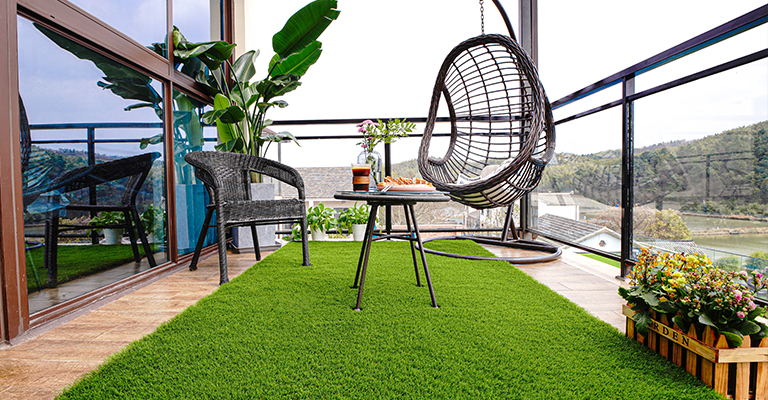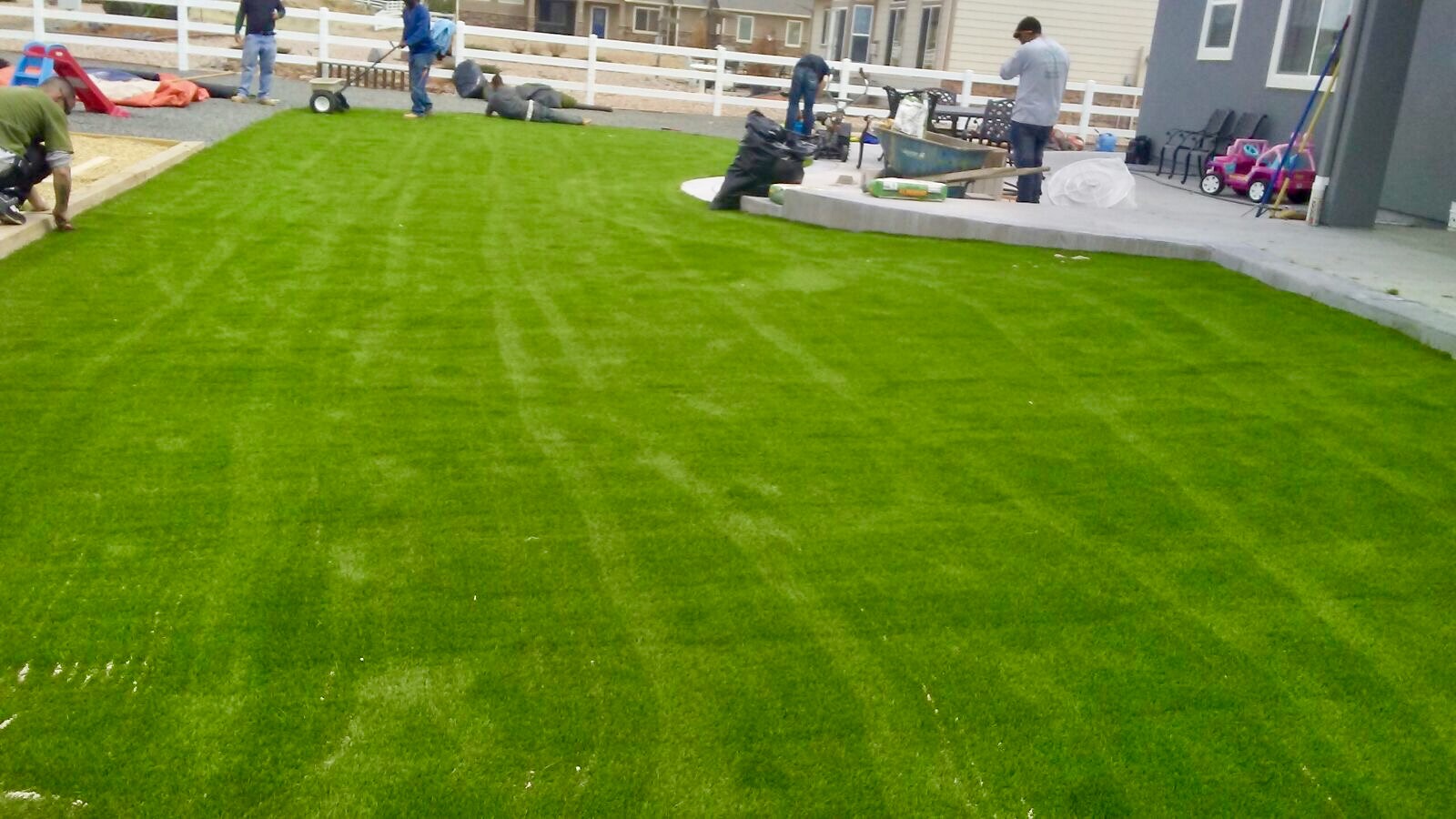Look Into the Environmental Benefits of Opting for Artificial Turf Solutions
The adoption of fabricated turf options offers a compelling chance to attend to pushing environmental difficulties. By dramatically reducing water usage and lessening the application of hazardous chemicals, these choices not just promote sustainable landscaping however additionally protect local environments.
Water Preservation Benefits
One of the most substantial benefits of synthetic grass is its ability to conserve water. In comparison, synthetic lawn does not require watering, dramatically lowering the general demand for water sources.
By removing the requirement for normal watering, synthetic grass adds to lasting landscape methods and aids mitigate the environmental effect of extreme water consumption. In addition, the preservation of water reaches the reduction of overflow, which can cause soil erosion and waterway contamination.
In addition, the installment of fabricated grass permits communities and homeowners to allocate water resources much more successfully, concentrating on important uses such as drinking water and agriculture. The shift towards synthetic grass not just advertises responsible water usage yet also lines up with broader environmental goals focused on preserving natural deposits.
As neighborhoods progressively prioritize sustainability, the water preservation benefits of man-made turf present an engaging instance for its adoption in domestic and industrial landscape design tasks.
Lowered Chemical Use
The transition to synthetic grass significantly reduces the reliance on chemical therapies commonly utilized in all-natural turf maintenance. Typical grass monitoring usually entails the application of plant foods, pesticides, and herbicides to promote growth and control bugs. These chemicals can pose dangers to human wellness, neighborhood wild animals, and the setting, adding to dirt and water contamination.
In contrast, artificial grass eliminates the need for these hazardous substances. By minimizing the launch of synthetic compounds into the environment, artificial turf advertises much healthier dirt and water systems.
Additionally, the absence of chemical overflow associated with synthetic grass installments aids protect local waterways from contamination, supporting marine life and keeping biodiversity. Phoenix turf companies. As neighborhoods progressively focus on lasting methods, choosing fabricated grass presents a viable solution that lines up with ecological preservation objectives. With this shift, homeowner can appreciate lavish environment-friendly rooms without endangering environmental health and wellness, leading the way for a much more sustainable future
Reduced Carbon Footprint

Furthermore, the setup of artificial grass can cause substantial water conservation. Natural yards call for considerable amounts of water for irrigation, which not check my site just contributes to the carbon impact connected with water removal and therapy but likewise stress neighborhood water sources. In contrast, man-made lawn requires minimal maintenance, requiring no watering, consequently considerably minimizing water use and its linked energy costs.
Additionally, the durability of man-made lawn adds to its lower carbon influence. With a life-span of up to 15 years or even more, the demand for frequent substitutes is diminished, resulting in much less waste and reduced power intake in production and dealing with conventional turf options. In general, synthetic grass presents a sustainable alternative for eco aware landscape design.
Environment Preservation
Habitat preservation is a vital consideration in the dispute over landscaping choices, especially when contrasting synthetic grass to all-natural lawn. All-natural grass lawns often call for extensive upkeep, including making use of pesticides, herbicides, and fertilizers, which can negatively impact neighborhood ecosystems. These chemicals can seep into the dirt and waterways, damaging native vegetation and fauna and interfering with regional environments.
Artificial grass gets rid of the requirement for damaging chemicals, thereby protecting nearby wildlife and maintaining the integrity of surrounding communities. The setup of synthetic grass can lead to the conversion of former lawn areas into more biodiverse landscapes, such click here for more info as pollinator gardens or indigenous plant locations, which can sustain neighborhood wild animals.
Inevitably, the change to fabricated lawn not just preserves water and lowers upkeep initiatives but also fosters an extra unified partnership between human activities and the native environment, advertising environment preservation while doing so.
Long-Term Sustainability
Long-lasting sustainability is an essential consider evaluating the benefits of man-made grass over conventional grass yards. One of one of the most considerable advantages of synthetic grass is its sturdiness; it can last approximately 15-20 years with marginal upkeep, whereas all-natural grass needs frequent reseeding and substitute. This longevity reduces the need for continuous resources, such as water, plant foods, and pesticides, which are essential for maintaining a healthy yard lawn.
In addition, synthetic grass contributes to a reduction in carbon discharges related to lawn treatment devices. Standard yards typically need gas-powered lawn mowers, trimmers, and blowers, all of which add to air contamination. Phoenix turf companies. In contrast, man-made lawn eliminates the demand for such tools, promoting a cleaner atmosphere
In addition, the production of synthetic turf progressively makes use of recycled materials, improving its sustainability account. As suppliers adopt green practices, the environmental footprint of synthetic grass remains to diminish.

Conclusion
The adoption of synthetic grass options provides considerable ecological benefits, consisting of considerable water preservation, decreased dependence on unsafe chemicals, and a reduced carbon impact. Artificial turf help in protecting natural habitats by decreasing land disruption and promoting lasting sustainability via the use of durable products. Jointly, these factors highlight the potential of artificial lawn to add favorably to environmental wellness and use a viable alternative to typical landscape design techniques in an increasingly resource-conscious world.
In comparison, artificial turf does not require watering, significantly lowering the general need for water resources. By minimizing the launch of synthetic substances into the environment, man-made turf promotes much healthier soil and water systems.
In addition, the setup of artificial grass can result in substantial water conservation. In comparison, synthetic lawn needs very little upkeep, requiring no watering, thereby dramatically lowering water usage and its linked power prices.

 Jonathan Taylor Thomas Then & Now!
Jonathan Taylor Thomas Then & Now! Kelly McGillis Then & Now!
Kelly McGillis Then & Now! Mary Beth McDonough Then & Now!
Mary Beth McDonough Then & Now! Dawn Wells Then & Now!
Dawn Wells Then & Now! Peter Billingsley Then & Now!
Peter Billingsley Then & Now!